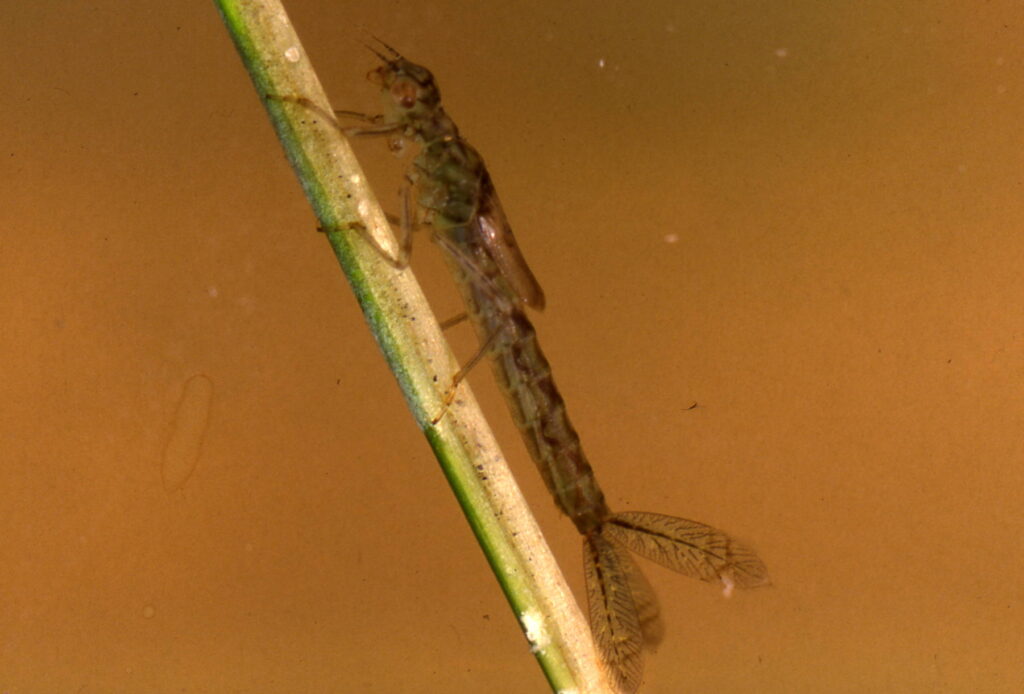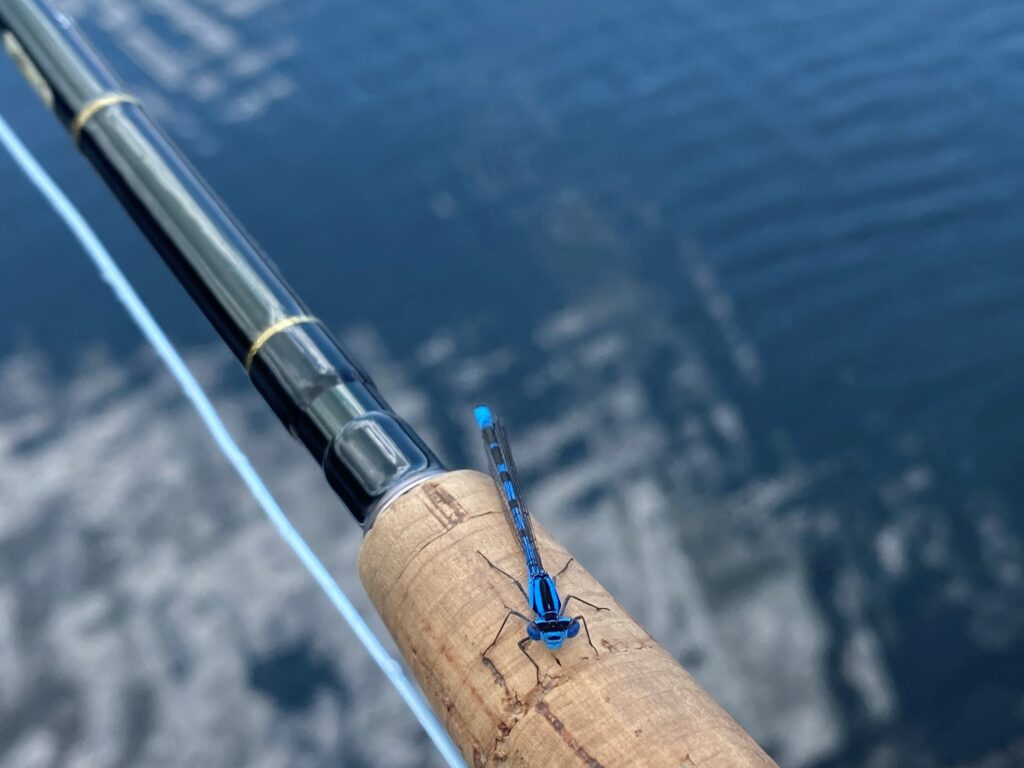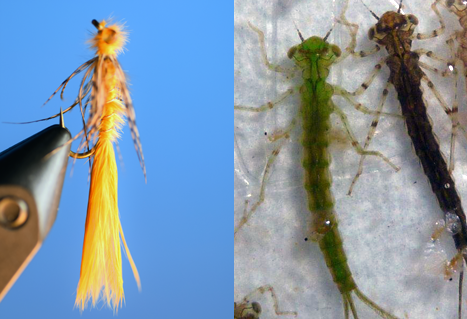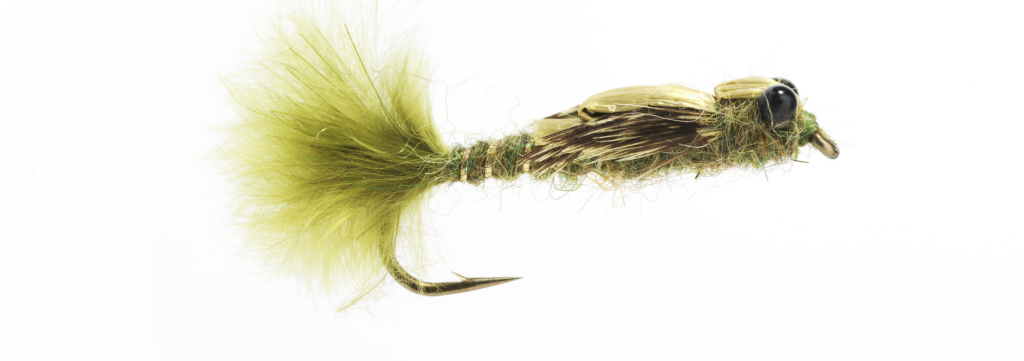For many, our first encounter with adult damselflies was as kids, chasing them around with butterfly nets along the edge of a lake or pond. These often colourful insects have long, slender abdomens and four thin wings that, at rest, are held along the back of the abdomen. Did you know that damselflies are a prime food source for trout?
Damselflies belong to the insect order Odonata. Worldwide, there are over 650 species of this relatively primitive order, widely distributed from the tropics to the Arctic. Odonata is broken down into two sub-orders: Anisoptera, the dragonflies, and Zygoptera, the damselflies. About 200 species of Zygoptera are found throughout their global range.
Damselfly Life Cycle
Damselfly life cycles vary in length from one to three years. Damselflies exhibit an “incomplete metamorphosis,” with only three developmental stages: egg, larva (nymph), and adult, but no pupal stage.
During their development, larvae shed their exoskeletons many times to grow. The shedding is called a “molt,” while the period between moltings is called an “instar.”
Larval habitats include the shallow or littoral (edge) zones of lakes, ponds, brackish waters, and the slower reaches of rivers and streams. Damselfly larvae are easily distinguished by their long, slender bodies, distinct wing pads, and well-developed mouthparts. Larvae also possess three paddle-shaped caudal gills (or lamellae) located at the tip of the abdomen. While these gills are an integral part of the respiratory system, they also act as rudders or stabilizers during the larva’s sinusoidal (S-shaped) swimming motion.


At maturity, some larvae can attain lengths over 35 millimetres. Juvenile and maturing larvae seek the cover provided by benthic (near-bottom) and emergent vegetation growing on the shoal or littoral zones of the lake or stream. Ideal habitats are thick mats of stonewort, pondweed, or milfoil growing in water depths from one to five metres.
Damselfly larvae are carnivores: they crawl through vegetation in search of shrimp, mayfly nymphs, chironomid larvae, and zooplankton. Their lower jaw is articulated, and can be extended to grasp unsuspecting prey. Larval colouration often closely matches their habitat, helping them to avoid predators like trout. When fully developed, mature damselfly larvae swim to within about a metre of the surface, searching for emergent vegetation to complete their transformation to adults.
Patches of longstem bulrush and cattail make excellent sites for mature nymphs to crawl up stems out of the water. The skin of each now-exposed larva dries and splits along the back of the thorax, allowing the “teneral” (soft-bodied adult) form to emerge. Over several hours, the newly emerged adults complete development and are able to fly away from the water.
Adult damselflies can live for several months, feeding heavily on smaller flying insects like mosquitoes and mayflies. Mating typically occurs within a couple of weeks of emergence, often preceded by intricate displays of courtship whose end-result is adults flying around in tandem. Egg-laying typically occurs on emergent or floating vegetation. The females use their ovipositor to create an opening in a plant stem into which eggs are deposited.
Fishing the Hatch: Damselfly Patterns
Trout patrol the openings between mats of submerged and surface vegetation as they search for both juvenile and maturing larvae. Damselfly larvae are most vulnerable to trout when they begin the “emergence swim” to complete their life cycle. The observant angler should look for large numbers of sinusoidally swimming larvae in the upper layers of the water column. Trout will pick off the larvae as they make their way to patches of bulrushes or cattails.
It’s heart-pounding action when trout hit or roll onto the stems of bulrushes to knock larvae or emerging adults into water only a metre deep. The trout then quickly turn back to feast on the struggling insects.


Fly patterns representing the larvae can vary from quite simple to very realistic in design. Patterns may not have to be too realistic during the first few days of the mature larval emergence swim but, as the trout continue to gorge, they can become fussy as to size, shape, and colour. Since the colour of damselfly larvae will match their habitat, consider that when choosing an appropriate fly. The natural swimming action of marabou fibres makes them an excellent material when tying both suggestive and more realistic larval patterns.
Damselfly Fly-Fishing Techniques
Intermediate/slow sinking and floating fly-lines are ideal for fishing damselfly patterns. The intermediate sinking line is best used to imitate the larval swim from the lake-bottom to the upper water column. Floating lines are perfect for matching mature larvae swimming within the upper metre of water to surface vegetation, as well as for presenting floating adult patterns when fish are being taken in shallow water.
Damselfly larvae are not fast swimmers. They maintain a slow but steady side-to-side action whether swimming up off the lake-bottom, or moving horizontally through the water. A slow, steady hand-twist retrieve, with the occasional side-to-side twitch of the rod tip, is usually all that is needed to attract the attention of a cruising trout.
Author: Brian Chan, Fishing Advisor, Freshwater Fisheries Society of BC
